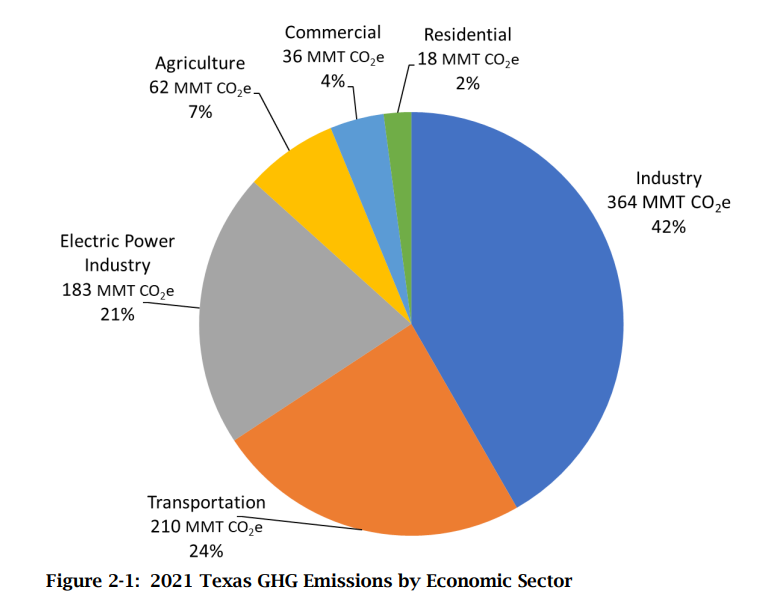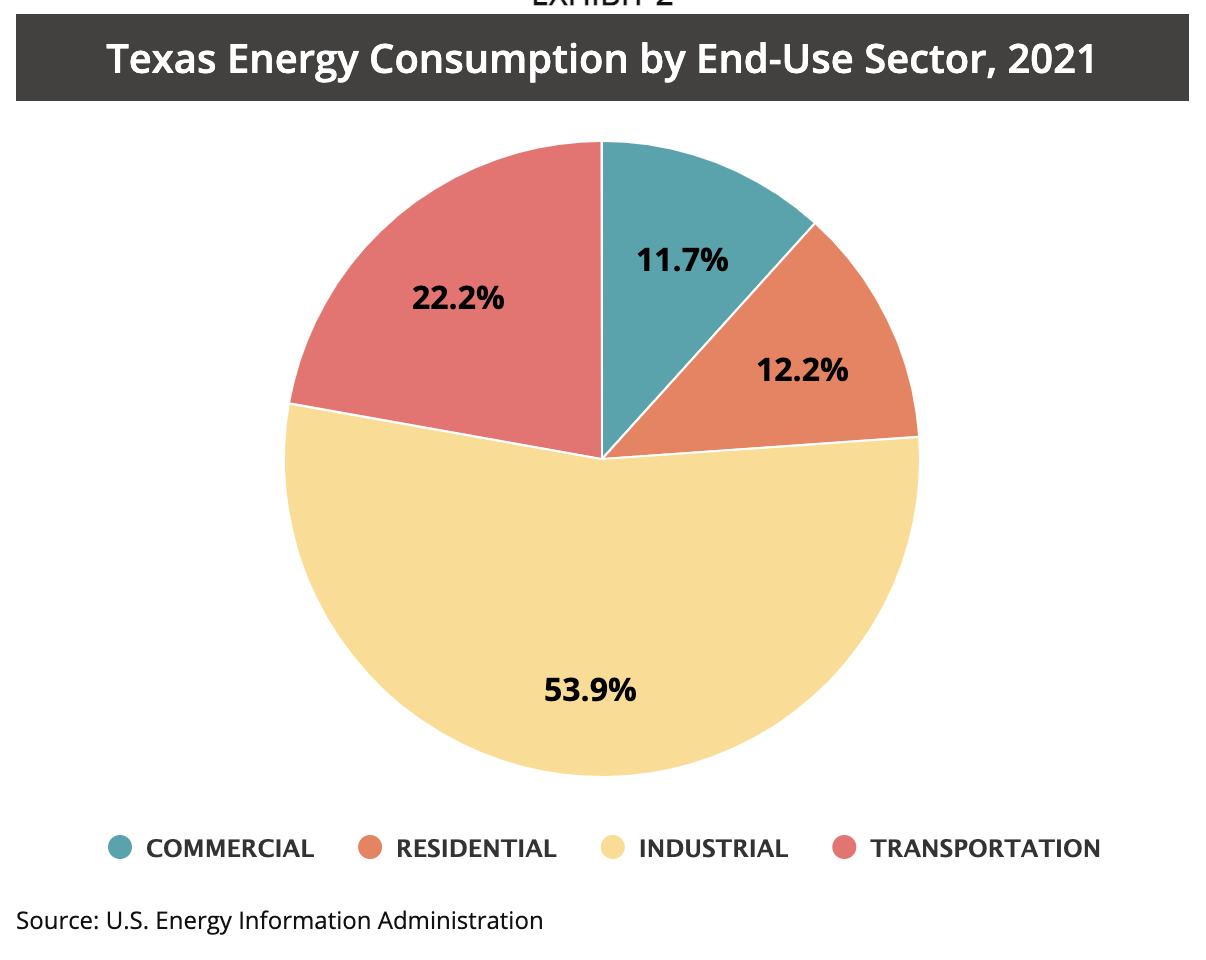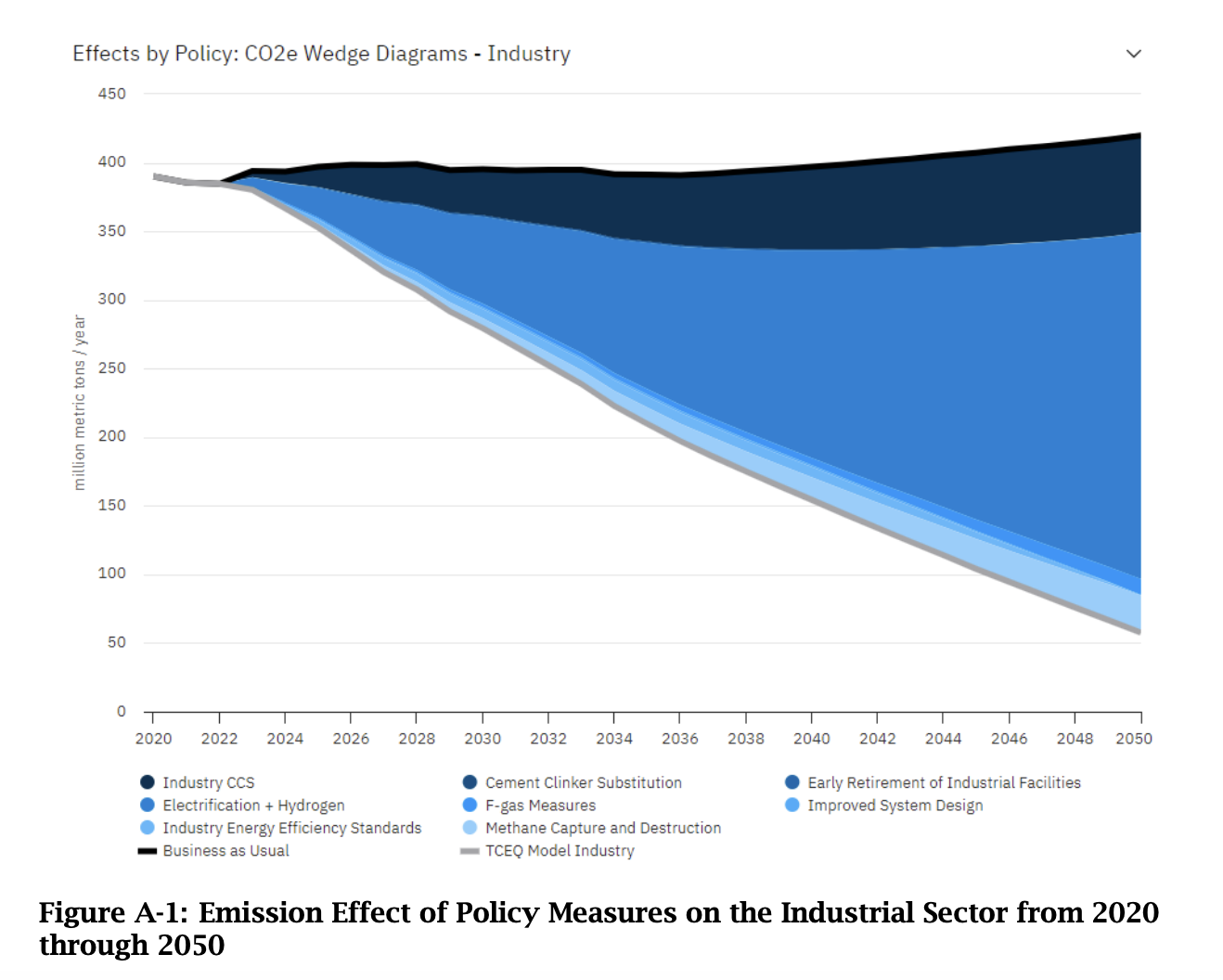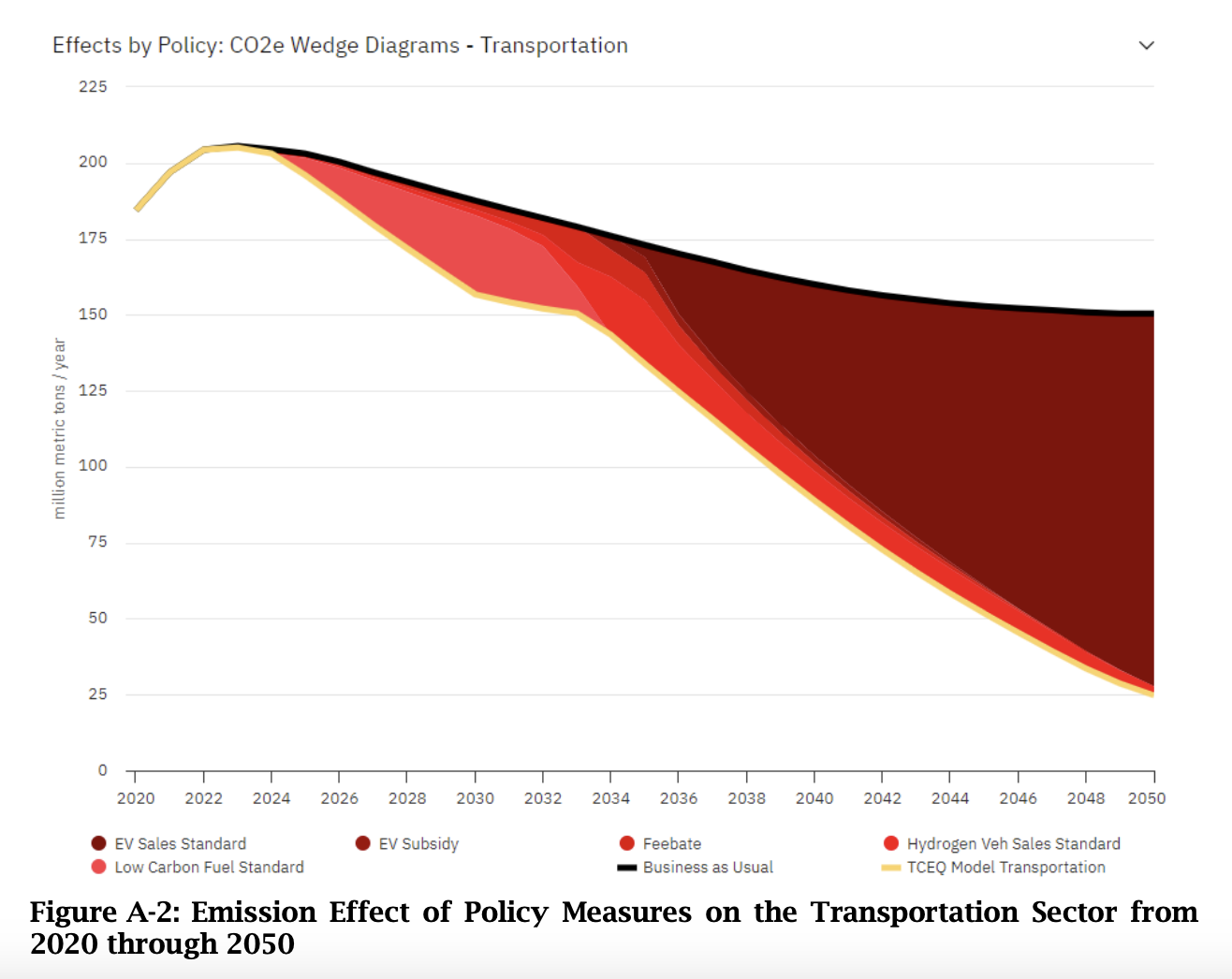The Texas Commission on Environmental Quality recently released its Climate Pollution Reduction Grants Priority Action Plan for the State of Texas (PAP). The plan was developed as part of the Environmental Protection Agency’s (EPA) Climate Pollution Reduction Grants (CPRG) Phase I Planning Grant. This program is part of the Inflation Reduction Act.
In addition to TCEQ’s plan, which covers the state as a whole, each major metro area in the state submitted a plan of their own.
(San Antonio, Austin, McAllen, Houston, DFW, El Paso)
The TCEQ plan is significant because it is one of the first times the state has done an inventory on sources of climate-harming greenhouse gas emission in the state.
According to this inventory, the two sectors responsible for the majority of Texas’s greenhouse gas emissions are industry and transportation, with electrical generation coming in third.
Since all other sectors use electricity, I wondered how that slice of the pie is shared among the different sectors. According to the Energy Information Administration, residential use of electricity constitutes just above 12%, while industry accounts for more than 50% of energy use. If you combine the appropriate share of electrical generation emissions with the residental and industrial sectors, you get a total of about 4.5% of the greenhouse gas emissions in Texas from residential sources and 53% from industrial sources.
It is notable that transportation emissions make up such a large share of the total at 24%. This includes all forms of transportation, from cargo ships to passenger vehicles and eighteen wheelers. This is not surprising in a state which relies so heavily on individual vehicles for transportation, even in major cities.
All those cars and trucks emit not just carbon dioxide, but several other compounds that contribute to air pollution. A strength of the state PAP is that it includes an analysis of expected reduction of air pollutants (VOCs, NOx, SOx, PM, and others) alongside greenhouse gas emissions, a recognition of the multiple benefits of cleaning up industrial and transportation pollution, in particular.


In addition to the emissions inventory, the PAP makes recommendations for voluntary measures for emissions reductions in each sector.
Using a model to estimate the effect of various measures like energy efficiency and electrification, TCEQ found that for the industrial sector, over the period from 2025-2050, carbon emissions could be reduced from a business as usual estimate of over 400 MMT/year to a rate of just over 50 MMT/year by the end of the period.
Emissions from the transportation sector could be reduced by the end of the period 2025-2050 from about 150 MMT/year for the business as usual scenario to about 25 MMT/year.


The measures proposed in TCEQ’s plan and the projected reduction in the state’s greenhouse gas emissions are significant, especially over the long term. But I do have a few questions.
First Question:
Much of the improvement in transportation sector emissions is tied to electric vehicle subsidies, which simply replace internal combustion vehicles with electric vehicles. One missed opportunity in TCEQ’s plan is that there is no mention of reducing reliance on individual passenger vehicles.
In contrast, the plan for the Austin metro area includes improvements to public transit and other initiatives designed to reduce the number of miles a resident drives each day in a personal vehicle. The Austin plan identifies co-benefits to expanding public transit, like better access to transportation for people who are unable to or prefer not to drive, lower congestion on highways, and even intangibles like stronger community ties. These considerations are not addressed by incentivizing electric vehicles, but do pose an opportunity for significant further reduction in emissions, in addition to improving mobility and quality of life for commuters.
The difference in approaches of the State of Texas PAP released by TCEQ and the Austin PAP reflects the reality that ultimately, climate mitigation plans made at the national and international level depend on local implementation. Here’s a video of Secretary of Natural Resources for the State of California Wade Crowfoot talking about what he calls the “Implementation Crisis.”
The release of these state and city-level PAPs is an excellent opportunity for the TCEQ to partner with city and local governments to design climate mitigation plans that strategically benefit communities and commuters, air quality and carbon emissions all at once.
That’s the ideal, but it is an open question whether this kind of cooperation is possible in Texas given the recent tension between state and local governments on issues ranging from HR practices to plastic grocery bags to public education.
Second Question:
If the industrial sector is the source of such a large share of climate-harming emissions (along with air and water quality issues), why is so much emphasis placed on residential customers when it comes to reducing emissions? Even if every resident of the state turned off their AC, appliances, furnaces, and refrigerators they could only make a possible 4% dent in Texas’s emissions. No amount of residential belt-tightening is going to make a difference in Texas’s carbon emissions portfolio if we can’t deal with industrial emissions. The state has a notoriously checkered history of regulating air pollution, so I am hesitant to accept that carbon emissions will be addressed rigorously. Which brings me to my third question.
Third Question:
The TCEQ PAP indicates that all mitigation measures are voluntary. Voluntary compliance, especially in the industrial sector, has not proven effective in the area of air and water pollution or electrical utility reliability (here is one recent example). A stronger regulatory approach, with both incentives and penalties would better reflect the urgency of mitigating climate-harming pollution.
Final Thought:
On balance the release of the TCEQ PAP and all of the state plans is great news. We now have a solid picture of where our carbon emissions are coming from, which will enable policymakers to direct their attention to the sectors most in need of improvement. Let’s use it as an opportunity to have a data-driven conversation with lawmakers at all levels about the importance of climate mitigation, air quality, and the quality of life in our cities.
